MA5-15895
antibody from Invitrogen Antibodies
Targeting: MCM2
BM28, CCNL1, cdc19, CDCL1, D3S3194, DFNA70, KIAA0030
Antibody data
- Antibody Data
- Antigen structure
- References [3]
- Comments [0]
- Validations
- Immunohistochemistry [2]
- Flow cytometry [2]
- Other assay [3]
Submit
Validation data
Reference
Comment
Report error
- Product number
- MA5-15895 - Provider product page

- Provider
- Invitrogen Antibodies
- Product name
- MCM2 Monoclonal Antibody (2B3)
- Antibody type
- Monoclonal
- Antigen
- Purifed from natural sources
- Description
- MA5-15895 targets MCM2 in indirect ELISA, FACS, IHC, and WB applications and shows reactivity with Human, mouse, Non-human primate, and Rat samples. The MA5-15895 immunogen is purified recombinant fragment of human MCM2 expressed in E. Coli. . MA5-15895 detects MCM2 which has a predicted molecular weight of approximately 125kDa.
- Reactivity
- Human, Mouse, Rat
- Host
- Mouse
- Isotype
- IgG
- Antibody clone number
- 2B3
- Vial size
- 100 μL
- Concentration
- Conc. Not Determined
- Storage
- Store at 4°C short term. For long term storage, store at -20°C, avoiding freeze/thaw cycles.
Submitted references Vitamin B6 deficiency disrupts serotonin signaling in pancreatic islets and induces gestational diabetes in mice.
Co-Administration of Fendiline Hydrochloride Enhances Chemotherapeutic Efficacy of Cisplatin in Neuroblastoma Treatment.
A Dual Inhibitor of Cdc7/Cdk9 Potently Suppresses T Cell Activation.
Fields AM, Welle K, Ho ES, Mesaros C, Susiarjo M
Communications biology 2021 Mar 26;4(1):421
Communications biology 2021 Mar 26;4(1):421
Co-Administration of Fendiline Hydrochloride Enhances Chemotherapeutic Efficacy of Cisplatin in Neuroblastoma Treatment.
Brizzolara A, Garbati P, Vella S, Calderoni M, Quattrone A, Tonini GP, Capasso M, Longo L, Barbieri R, Florio T, Pagano A
Molecules (Basel, Switzerland) 2020 Nov 10;25(22)
Molecules (Basel, Switzerland) 2020 Nov 10;25(22)
A Dual Inhibitor of Cdc7/Cdk9 Potently Suppresses T Cell Activation.
Chen EW, Tay NQ, Brzostek J, Gascoigne NRJ, Rybakin V
Frontiers in immunology 2019;10:1718
Frontiers in immunology 2019;10:1718
No comments: Submit comment
Supportive validation
- Submitted by
- Invitrogen Antibodies (provider)
- Main image
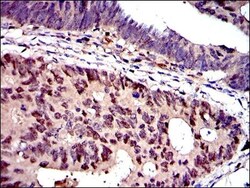
- Experimental details
- Immunohistochemical analysis of paraffin-embedded colon cancer tissues using MCM2 monoclonal antibody (Product # MA5-15895) followed with DAB staining.
- Submitted by
- Invitrogen Antibodies (provider)
- Main image
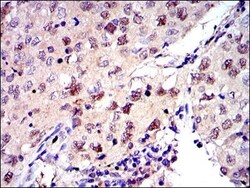
- Experimental details
- Immunohistochemical analysis of paraffin-embedded lung cancer tissues using MCM2 monoclonal antibody (Product # MA5-15895) followed with DAB staining.
Supportive validation
- Submitted by
- Invitrogen Antibodies (provider)
- Main image
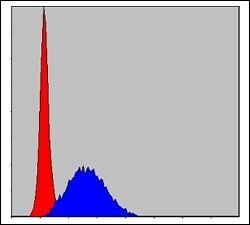
- Experimental details
- Flow cytometric analysis of HeLa cells using MCM2 monoclonal antibody (Product # MA5-15895) (blue) and negative control (red).
- Submitted by
- Invitrogen Antibodies (provider)
- Main image
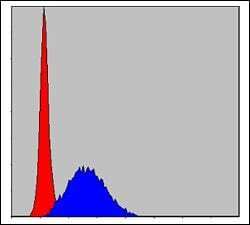
- Experimental details
- Flow cytometric analysis of HeLa cells using MCM2 monoclonal antibody (Product # MA5-15895) (blue) and negative control (red).
Supportive validation
- Submitted by
- Invitrogen Antibodies (provider)
- Main image
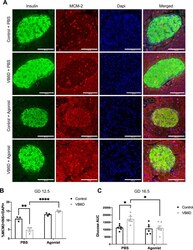
- Experimental details
- Fig. 4 HTR2B receptor agonist treatment increases beta-cell proliferation in vitamin B6-deficient dams and normalizes glucose tolerance at GD 16.5. Shown in ( A ) is representative x20 immunofluorescent images of GD 12.5 pancreases from PBS and HTR2B agonist injected control and vitamin B6-deficient (VB6D) mice. Proliferating beta-cells are identified using MCM-2 and Insulin antibodies and calculated as percentage of total beta-cells ( B ). Glucose AUC for PBS and HTR2B agonist-treated control and VB6D dams at GD 16.5 is shown in ( C ). Data for panels A and B are based on 40-50 islets per mouse ( N = 3 mice), while panel C represents 5-7 mice. Two-way ANOVA tests performed in panels B and C revealed a diet x treatment interaction effect and post hoc Tukey''s multiple comparison tests were subsequently performed. * p
- Submitted by
- Invitrogen Antibodies (provider)
- Main image
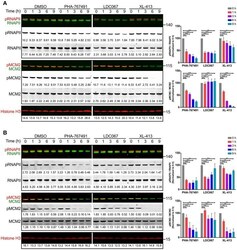
- Experimental details
- Figure 2 PHA-767491 inhibits the function of canonical targets Cdc7 and Cdk9. PHA-767491 inhibits the phosphorylation of both RNAPII (S2) and MCM2 (S40) in (A) Jurkat cells and (B) OT-I CTL. The cells were incubated with the respective inhibitors for the indicated duration. Raw values for the band intensities are shown below the respective bands. Representative blots of three independent experiments are shown. The averaged values of the ratio of the band intensities for both RNAPII and MCM2, normalized to their respective 0 h samples, are shown in bar charts to the right. Bar charts are represented as mean +- SEM. Statistical significance was determined by unpaired two-sided Student's t -test (n.s, non-significant; * p < 0.05; ** p < 0.01; *** p < 0.001).
- Submitted by
- Invitrogen Antibodies (provider)
- Main image
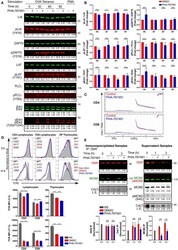
- Experimental details
- Figure 7 PHA-767491 modulates TCR signaling. (A) PHA-767491 treatment suppresses Erk phosphorylation. Immunoblots of OT-I CTL that were not-treated (-) or were treated (+) with PHA-767491 were stimulated with K b -OVA tetramers for the indicated times. Normalized values of individual bands are indicated below the respective bands. Representative blots of at least three independent experiments are shown. (B) The ratio of the band intensities of the phosphorylated proteins to the respective total proteins from (A) are shown in the bar charts, depicted as mean +- SEM. Values represent fold change, normalized to the DMSO-treated sample values for the respective time points. (C) PHA-767491 does not impair Ca 2+ flux. Peripheral lymphocytes were either pre-treated with PHA-767491 or not and were incubated with biotinylated anti-CD3 antibodies. Lymphocytes were first cross-linked using streptavidin, followed by an exogenous addition of CaCl 2 solution, and finally treated with ionomycin. (D) PHA-767491 affects TCR recycling in stimulation assays. Peripheral lymphocytes and thymocytes were stimulated with plate-bound anti-CD3 antibody or anti-CD3/CD28 beads, respectively, for 3 or 17 h. Values indicated in the histograms represent the MFI. (E) Cdc7 association with Dbf4 and MCM2 is reduced in TCR stimulated T cells treated with PHA-767491. Serum-starved Jurkat cells that were not-treated (-) or treated (+) with PHA-767491 were seeded into wells coated with plate-bound a
 Explore
Explore Validate
Validate Learn
Learn Western blot
Western blot ELISA
ELISA Immunohistochemistry
Immunohistochemistry